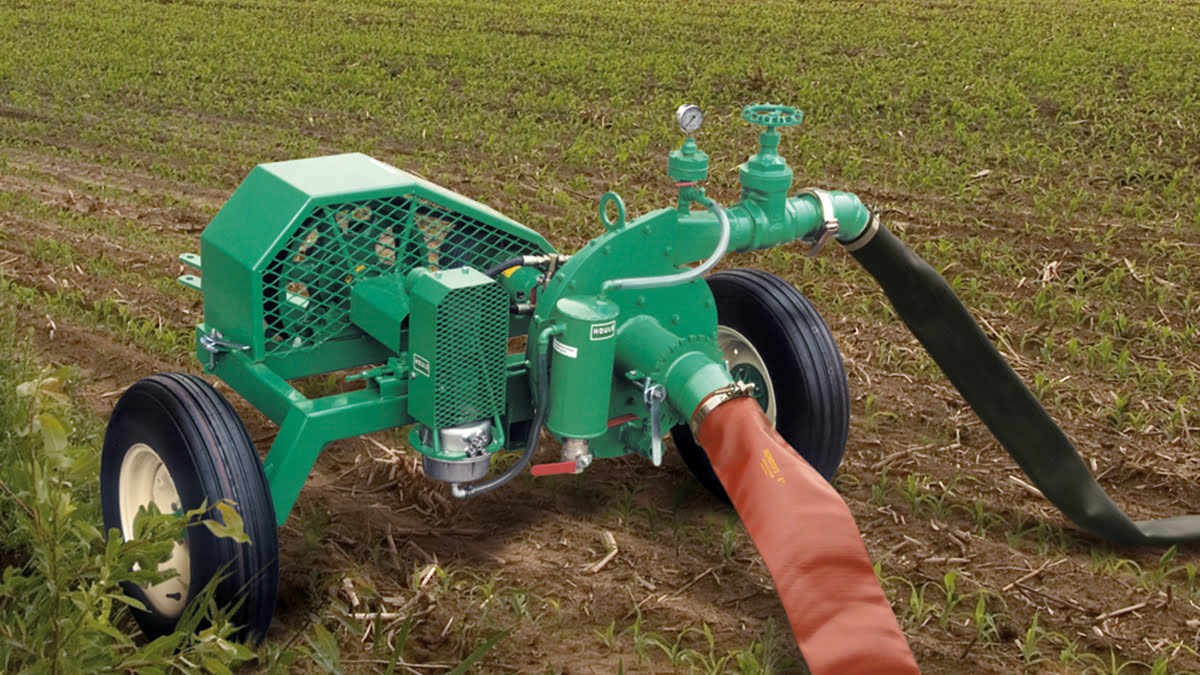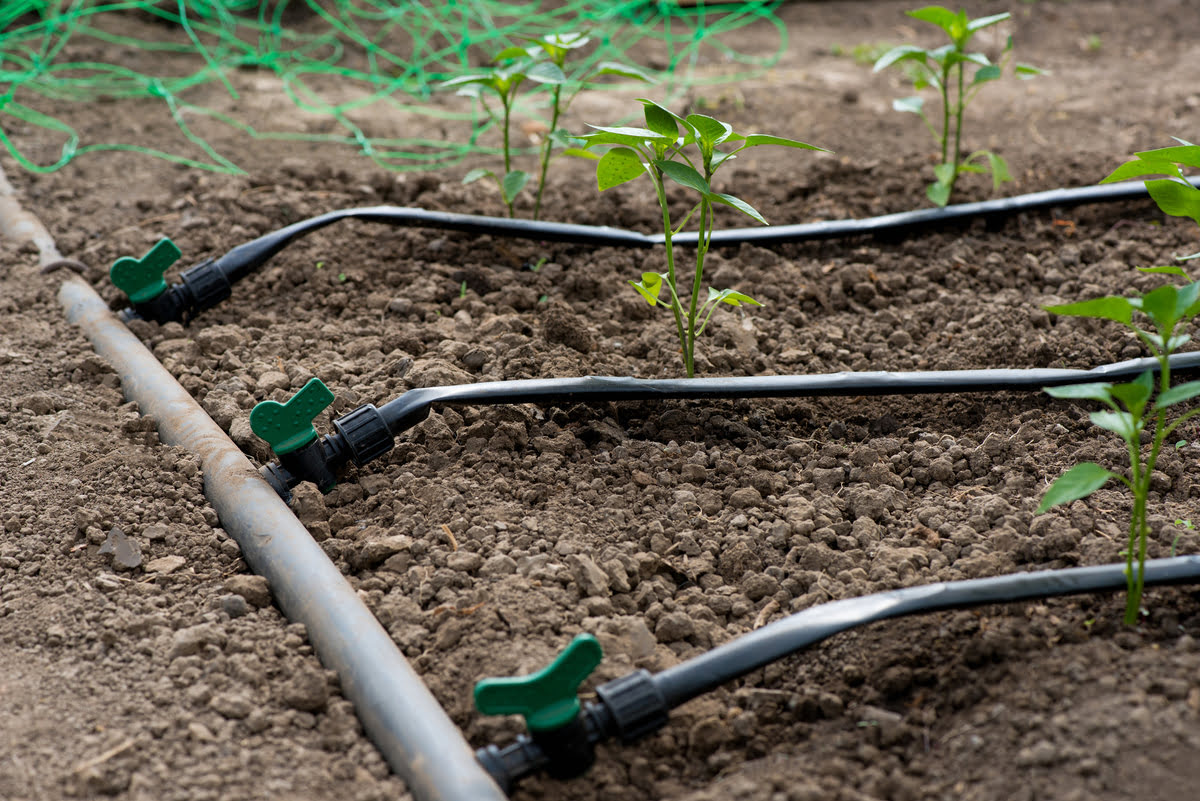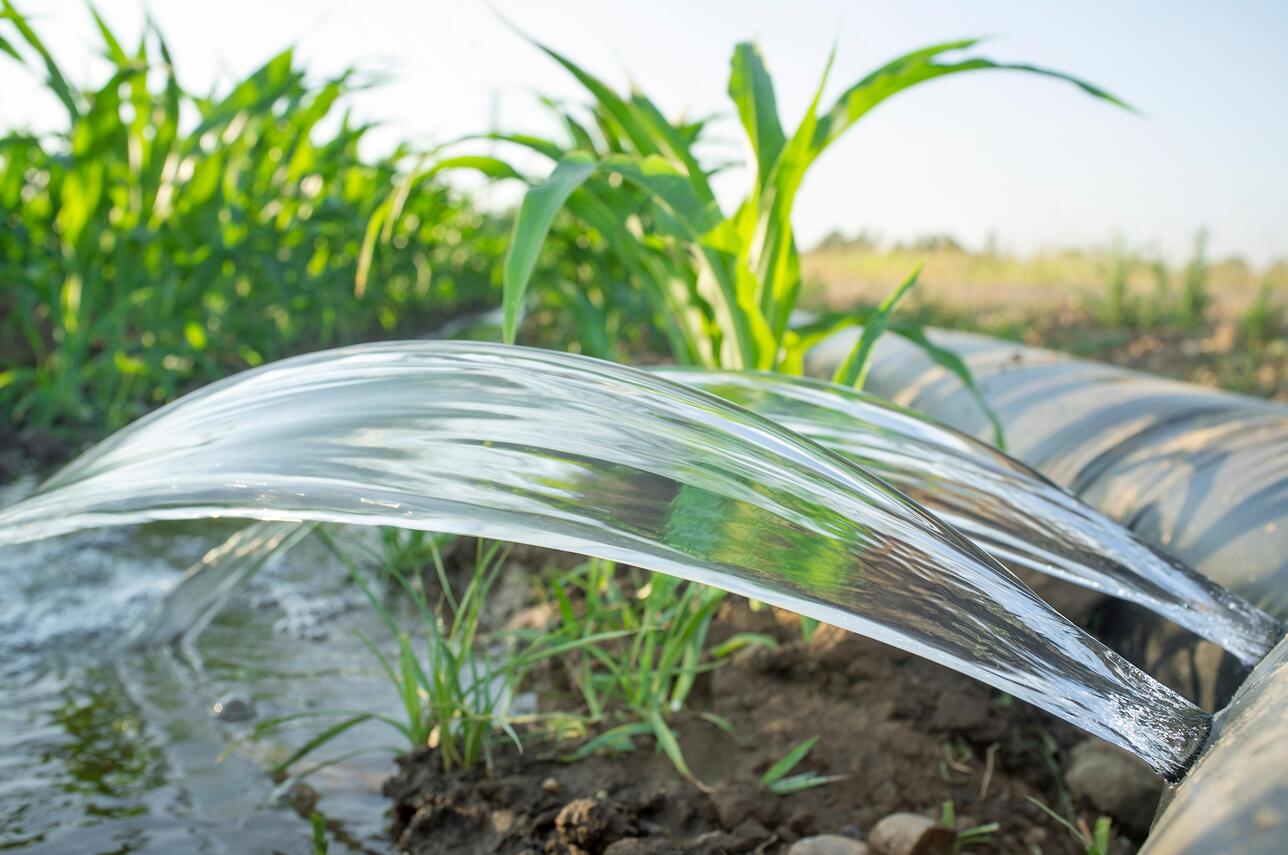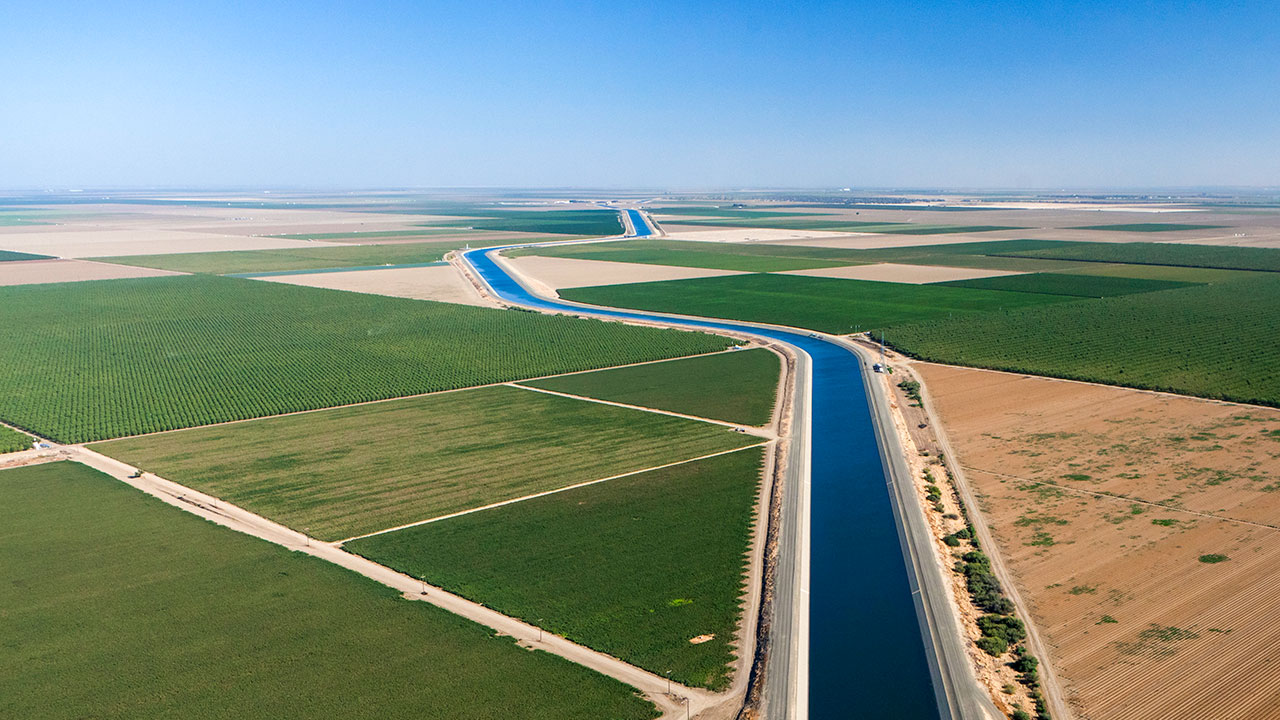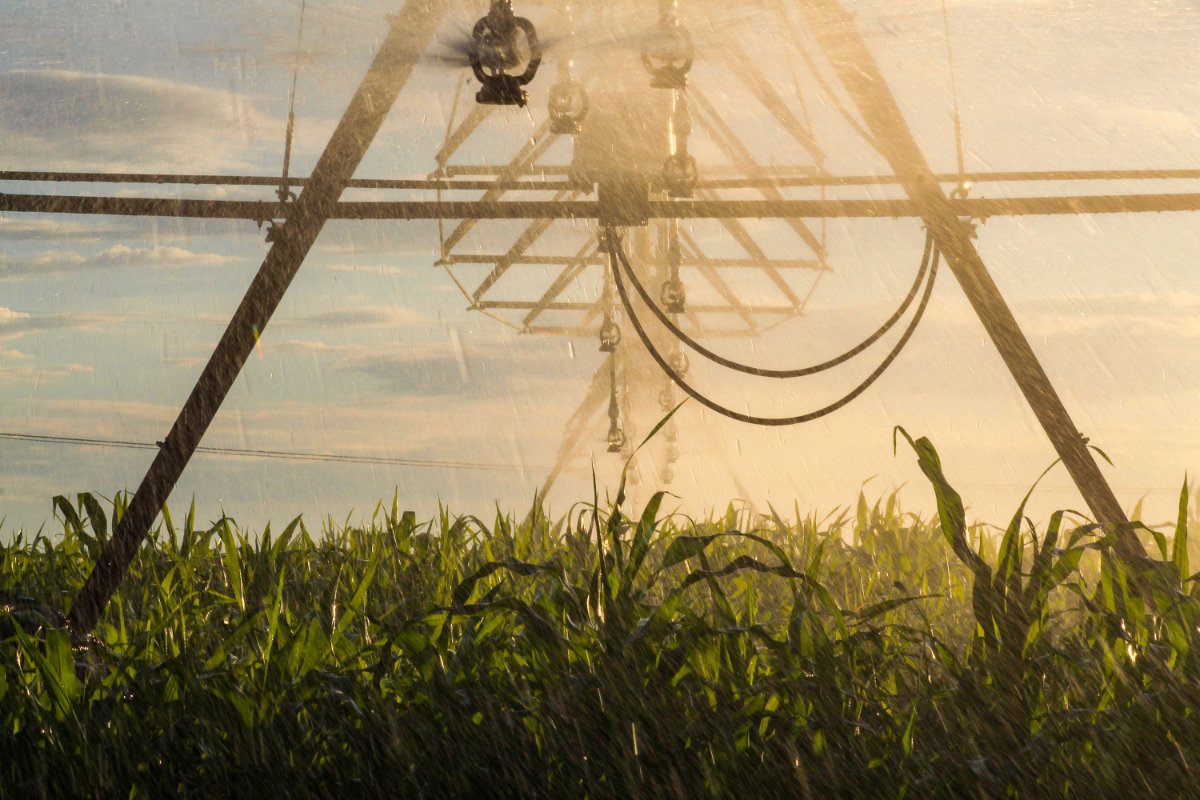Home>Gardening News and Trends>Latest News>Why Was Irrigation Invented
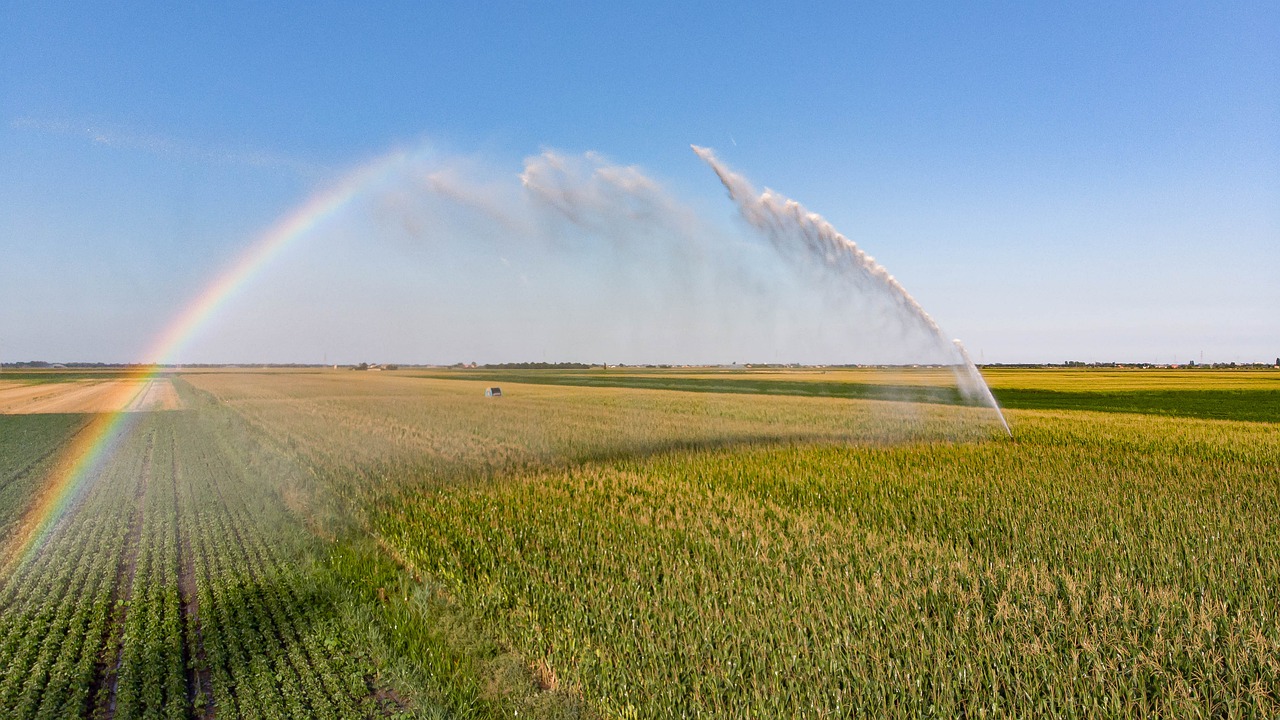

Latest News
Why Was Irrigation Invented
Modified: January 22, 2024
Discover the latest news about the invention of irrigation and the reasons behind it. Explore the historical significance and modern applications.
(Many of the links in this article redirect to a specific reviewed product. Your purchase of these products through affiliate links helps to generate commission for Chicagolandgardening.com, at no extra cost. Learn more)
Table of Contents
Introduction
Water is the essence of life, and throughout history, humans have recognized the vital role it plays in sustaining their existence. In their quest to harness this precious resource, early civilizations developed various techniques for water management. One such pivotal innovation was the invention of irrigation.
Unlike natural rainfall, irrigation involves the deliberate supply of water to crops through artificial means. This practice revolutionized agriculture by enabling farmers to cultivate lands in arid regions and increase crop yields. From the ancient civilizations of Mesopotamia to modern-day agricultural systems, irrigation has proven to be a game-changer that has transformed the way we grow our food.
In this article, we will delve into the fascinating history of irrigation, exploring the reasons behind its invention, its impact on agricultural productivity, the different types of irrigation systems, historical developments, modern irrigation technologies, and the challenges faced by this crucial practice.
By understanding the origins and advancements of irrigation, we can appreciate its significance in shaping human civilization and ensuring food security for growing populations around the world.
Early Water Management Techniques
Long before the concept of irrigation was developed, early civilizations devised ingenious techniques to manage water for agricultural purposes. These inventive methods laid the foundation for the later invention of structured irrigation systems.
One of the earliest water management techniques was floodwater farming, utilized by ancient Egyptians along the Nile River. During the annual flooding, the river would deposit nutrient-rich silt onto the floodplains, creating fertile soil for cultivation. Farmers would wait for the floodwaters to recede, allowing the moisture to penetrate the ground before planting their crops.
In other regions like Mesopotamia, farmers constructed canals to divert water from nearby rivers and distribute it to their fields. They also dug ditches and built terraces to collect rainwater and prevent erosion. These rudimentary methods allowed civilizations to cultivate arid lands and sustain their populations.
Another water management technique employed by ancient societies was the construction of underground aqueducts. These intricate systems consisted of underground channels made of stone or clay, which transported water from natural springs to farming areas. The aqueducts maintained a constant flow of water, ensuring consistent irrigation for crops in regions where surface water was scarce.
Furthermore, ancient cultures like the indigenous peoples of the Americas developed efficient water storage systems. They constructed reservoirs and dams to capture rainwater and store it for later use during dry seasons. This enabled them to cultivate crops even in periods of low rainfall.
While these early water management techniques were limited in scope compared to modern irrigation systems, they laid the groundwork for the development of more sophisticated methods. The ingenuity of these ancient civilizations paved the way for the eventual invention of structured irrigation systems, revolutionizing agriculture and improving food production on a larger scale.
Reasons for the Invention of Irrigation
The invention of irrigation can be attributed to several factors that drove the need for a more reliable and controlled water supply for agricultural purposes. These reasons vary across different regions and time periods, but they all share the common goal of maximizing crop yields and ensuring food security.
One of the primary motives behind the invention of irrigation was the desire to overcome the limitations imposed by unpredictable rainfall patterns. In many arid and semi-arid regions, rainfall is scarce and irregular, creating challenges for consistent crop growth. By implementing irrigation systems, farmers could supplement the natural water supply and provide a steady source of moisture to their crops, irrespective of rainfall patterns.
In densely populated regions, the need to feed growing populations also played a significant role in the development of irrigation systems. As communities expanded, the reliance on natural rainfall alone became insufficient to sustain agricultural production. Irrigation allowed for the cultivation of larger areas of land, thereby increasing food production and supporting the needs of a burgeoning population.
Moreover, the invention of irrigation was closely tied to the development of complex civilizations and the rise of agricultural societies. In ancient Mesopotamia and Egypt, for example, the invention of irrigation systems was driven by the need to cultivate fertile floodplains adjacent to rivers. By harnessing the power of these river systems and carefully controlling water distribution, these civilizations were able to establish thriving agricultural economies.
Additionally, the expansion of trade and commerce played a role in the adoption of irrigation. In order to produce surplus crops for export and economic prosperity, farmers needed a reliable and abundant water supply. Irrigation enabled them to cultivate higher-value crops, such as cotton or spices, that required a steady water source and longer growing seasons.
Overall, the invention of irrigation was motivated by the need to overcome the limitations of rainfall, sustain growing populations, foster economic development, and maximize agricultural productivity. These driving forces have continued to shape the evolution of irrigation techniques and technologies throughout history.
Impact of Irrigation on Agricultural Productivity
The invention and widespread adoption of irrigation has had a profound impact on agricultural productivity over the centuries. By providing a controlled and reliable water supply to crops, irrigation has enabled farmers to overcome the limitations of rainfall and transform arid lands into fertile and productive agricultural systems.
One of the primary benefits of irrigation is the ability to maximize crop yields. Adequate water supply is essential for plant growth, and irrigation ensures that crops receive the necessary moisture throughout their growing stages. This results in increased productivity, as plants are less prone to water stress and can achieve their full growth potential.
Irrigation also allows farmers to diversify their crop selection and cultivate a wider range of plants. In regions where rainfall is limited, only certain types of crops can thrive. However, with irrigation, farmers have the flexibility to grow a variety of crops throughout the year, irrespective of the local climate. This not only enhances food security but also promotes economic stability by reducing dependence on a single crop.
Furthermore, irrigation systems have made it possible to reclaim and cultivate previously barren or marginal lands. Arid and semi-arid regions that were once deemed unsuitable for agriculture can now be transformed into productive farmlands. By providing the necessary water resources, irrigation has opened up new opportunities for agricultural development in these areas.
In addition to increasing crop yields, irrigation has also led to improvements in crop quality. With a controlled water supply, farmers can better manage the timing and amount of water applied to their crops. This precision allows for optimal growth and development, resulting in higher-quality fruits, vegetables, and grains. In turn, this improves marketability and allows farmers to command higher prices for their produce.
Another notable impact of irrigation is the extension of the growing season. By ensuring a consistent water supply, irrigation systems enable farmers to cultivate crops beyond the limitations imposed by the natural rainfall patterns. This significantly extends the period during which crops can be grown and harvested, leading to higher annual yields and increased profitability for farmers.
Overall, the impact of irrigation on agricultural productivity cannot be overstated. By providing a dependable water supply, irrigation has revolutionized farming practices, allowing for increased yields, crop diversification, land reclamation, crop quality improvement, and the extension of the growing season. It continues to play a crucial role in ensuring food security and fueling agricultural development worldwide.
Types of Irrigation Systems
Irrigation systems come in various forms, each suited to different geographical, climatic, and agricultural conditions. The choice of irrigation method depends on factors such as water availability, soil type, crop type, and economic considerations. Here are some of the most common types of irrigation systems:
1. Surface Irrigation: This is the oldest and most widely used method of irrigation. It involves flooding or furrowing the field with water, allowing it to spread and infiltrate the soil. Surface irrigation is suitable for level or gently sloping fields and can be further classified into subcategories like furrow irrigation, border irrigation, and basin irrigation.
2. Sprinkler Irrigation: This method involves using sprinklers to distribute water over the field in a manner similar to rainfall. Sprinkler irrigation is highly efficient and can be tailored to specific crop requirements. It is particularly suitable for areas with uneven terrain or where there is a scarcity of water resources.
3. Drip Irrigation: Drip irrigation involves the slow and precise application of water directly to the root zone of plants. This method uses a network of tubes or pipes with emitters to deliver water in a controlled manner. Drip irrigation is highly water-efficient and minimizes water loss due to evaporation or runoff. It is especially beneficial for water-scarce regions and high-value crops.
4. Subsurface Irrigation: In subsurface irrigation, water is distributed below the surface of the soil directly to the root zone of plants. This method reduces water loss through evaporation and avoids the wetting of foliage, which can lead to diseases. Subsurface irrigation is commonly used in sandy soils or areas prone to water scarcity.
5. Center Pivot Irrigation: Center pivot irrigation involves a sprinkler system that rotates around a central pivot and applies water to the crops in a circular pattern. This method is often used for large-scale agriculture and is suitable for flat or gently sloping fields.
6. Lateral Move Irrigation: This irrigation method is similar to center pivot irrigation but operates on a linear track instead of a circular path. It uses sprinklers or drip emitters to distribute water as it moves along the field. Lateral move irrigation is adaptable to irregularly shaped fields and can be automated for efficient water management.
Each type of irrigation system has its advantages and considerations. The choice of system depends on factors like water availability, crop requirements, topography, and economic viability. By employing the appropriate irrigation method, farmers can optimize water usage and ensure the sustainable and efficient growth of their crops.
Historical Developments in Irrigation
The history of irrigation is a testament to human ingenuity and the continuous quest for efficient water management. Over time, numerous advancements and innovations have shaped the practice of irrigation, allowing for more effective and sustainable agricultural practices.
One of the earliest known examples of irrigation dates back to ancient Mesopotamia, where the Sumerians developed complex irrigation systems around 4000 BCE. They constructed canals and levees to enable the controlled diversion and distribution of water from the Tigris and Euphrates rivers. This development marked a significant milestone in the history of irrigation, allowing for the cultivation of vast areas of fertile floodplains.
In Egypt, the ancient Egyptians harnessed the power of the Nile River to sustain their agricultural practices. They built intricate networks of canals and dikes to channel water into fields and created a system of basin irrigation. The concept of basin irrigation involved diverting floodwaters into enclosed basins, allowing the water to infiltrate the soil and provide moisture to the crops. This technique was a precursor to modern surface irrigation methods.
The Indus Valley Civilization, located in present-day Pakistan and India, also witnessed significant developments in irrigation systems around 3000 BCE. They designed an elaborate system of canals and dams to harness the water from the Indus River and its tributaries. The advanced engineering techniques and extensive irrigation networks utilized by this ancient civilization demonstrate their understanding of water management principles.
During the Roman Empire, several impressive irrigation projects were implemented. The Romans utilized aqueducts to transport water over long distances, enabling irrigation in regions far from water sources. One notable example is the Pont du Gard, an aqueduct bridge in France that supplied water to the city of Nimes. The Romans also introduced the concept of water wheels to lift water from rivers or aqueducts, improving the efficiency of irrigation systems.
In medieval times, Islamic cultures made significant advancements in irrigation. The Persian Qanat system, for instance, consisted of underground channels that tapped into groundwater sources and transported water to parched regions. This innovative technique allowed for the sustainable cultivation of crops in arid areas and played a crucial role in the flourishing of civilizations in the Middle East.
As the world entered the industrial era, technological advancements in irrigation gained momentum. In the 19th century, the invention of steam engines and the subsequent development of pumping stations revolutionized irrigation practices. This led to the widespread adoption of large-scale irrigation systems in regions like the American West and the Australian outback, increasing agricultural productivity in these semi-arid regions.
Today, technological innovations continue to shape the field of irrigation. Modern irrigation systems incorporate automation, sensor technologies, and precision irrigation techniques to optimize water usage and enhance crop productivity. The integration of computers and advanced control systems allows for more precise irrigation scheduling and reduces water waste.
Overall, the historical developments in irrigation highlight humanity’s relentless pursuit of efficient water management. From ancient civilizations to today’s technologically advanced societies, the evolution of irrigation has played a vital role in shaping agriculture and supporting human development.
Modern Irrigation Technologies
The advent of modern irrigation technologies has brought about significant advancements in water management efficiency and crop productivity. These innovative techniques and systems have revolutionized the field of irrigation, allowing farmers to optimize water usage, reduce waste, and enhance overall agricultural sustainability.
One of the key modern irrigation technologies is automated irrigation systems. These systems utilize sensors, weather data, and computer algorithms to precisely determine when and how much water to apply to crops. Automated irrigation eliminates the guesswork and potential human error, ensuring that water is delivered efficiently and in accordance with plant needs.
Precision sprinkler systems have also become increasingly popular in modern agriculture. These systems incorporate advanced designs that minimize water loss due to evaporation or wind drift. By delivering water precisely to the crop root zone, precision sprinklers maximize water use efficiency and minimize water waste, resulting in improved crop yields.
Drip irrigation, another modern technology, has gained popularity due to its efficiency and effectiveness. Drip systems deliver water directly to the plant’s root zone, reducing evaporation and minimizing weed growth. Drip irrigation is particularly beneficial for crops with shallow root systems or in water-scarce regions, as it significantly reduces water usage while maintaining high crop yields.
Smart irrigation controllers have emerged as important tools for efficient water management. These controllers use sensors to measure soil moisture levels, weather conditions, and plant water requirements. Based on these inputs, they automatically adjust the irrigation schedule and duration to ensure optimal watering without oversaturating or under-watering the crops.
Another innovative technology is remote sensing and satellite imagery. These tools provide valuable information on crop health, soil moisture levels, and irrigation needs over large areas. Farmers can analyze satellite data to identify areas of water stress or optimize irrigation scheduling, leading to more targeted and efficient water application.
Advancements in irrigation pumping systems have also improved efficiency and reduced energy consumption. Variable frequency drives (VFDs), for example, allow for precise control of pump motor speed, minimizing energy waste by matching the pump output to the actual irrigation demand. Solar-powered pumping systems are another sustainable alternative, harnessing the sun’s energy to power irrigation operations and reduce reliance on traditional energy sources.
Last but not least, the integration of data analytics and advanced software programs has transformed irrigation management. Farmers and irrigation professionals can utilize data-driven insights to make informed decisions about irrigation scheduling, efficiency optimization, and resource allocation. These tools enable real-time monitoring and analysis, leading to more sustainable and precise irrigation practices.
Overall, modern irrigation technologies have revolutionized water management in agriculture. By incorporating automation, precision, remote sensing, and data analytics, these advanced systems have enhanced water efficiency, optimized crop production, and contributed to a more sustainable and productive agricultural sector.
Challenges and Issues in Irrigation
While irrigation plays a critical role in sustaining agricultural production, there are several challenges and issues that need to be addressed to ensure its sustainable and efficient use of water resources. These challenges encompass environmental, economic, and social aspects of irrigation practices.
One of the foremost challenges is water scarcity. As global water resources become increasingly stressed due to population growth and climate change, maintaining a sufficient water supply for irrigation becomes more difficult. Competition for water resources between agricultural, industrial, and domestic sectors often leads to conflicts and unsustainable practices. Effective water management strategies and policies are crucial to overcome these challenges and prioritize the needs of agriculture.
Another key challenge is the inefficient use of water in irrigation systems. Traditional irrigation methods, such as flood irrigation, can result in significant losses due to evaporation, runoff, and inefficient water distribution. Outdated infrastructure and inadequate water management practices further exacerbate these issues. Redeveloping and modernizing irrigation systems, adopting precision irrigation techniques, and promoting water-saving practices can help address these inefficiencies.
Sustainability is another major concern in irrigation. The excessive use of water and the application of fertilizers and pesticides during irrigation can lead to water pollution and ecological imbalances. Nutrient leaching, salinization, and the depletion of groundwater resources are common environmental consequences associated with irrigation practices. Implementing practices like integrated water management, water recycling, and the use of organic fertilizers can mitigate these environmental challenges.
Furthermore, ensuring equitable access to water resources is a significant social challenge in irrigation. Limited access to water for small-scale farmers or marginalized communities can exacerbate food insecurity and socioeconomic disparities. Balancing the needs of all stakeholders, including small-scale farmers, indigenous communities, and women, is essential in establishing equitable water resource allocation and governance systems.
Economic viability is also crucial in promoting sustainable irrigation practices. The cost of implementing or upgrading irrigation systems, purchasing modern technologies, and maintaining infrastructure can be prohibitive for small-scale farmers. Improving access to financing, providing technical assistance, and promoting knowledge sharing among farmers can help overcome these economic barriers and encourage the adoption of more sustainable irrigation practices.
Lastly, climate change poses significant challenges to irrigation. Changing rainfall patterns, increased frequency of extreme weather events, and rising temperatures can impact the availability and timing of water resources for irrigation. Adapting irrigation systems to climate change, implementing efficient and resilient water management strategies, and promoting climate-smart agriculture practices are essential to cope with these challenges.
Addressing these challenges and issues requires a comprehensive and integrated approach. Collaboration between governments, farmers, researchers, and stakeholders is necessary to develop and implement sustainable irrigation policies, invest in infrastructure, promote efficient water use practices, and ensure the long-term sustainability of irrigation systems.
Conclusion
Irrigation has been a crucial innovation in human history, allowing for the cultivation of arid lands, increased crop yields, and sustainable agriculture. From ancient civilizations to modern times, irrigation has evolved significantly, driven by the need to overcome water scarcity, support growing populations, and enhance agricultural productivity.
Early water management techniques, such as floodwater farming and canal systems, laid the foundation for the invention of structured irrigation systems. These methods enabled civilizations to harness water resources and cultivate previously barren lands, ultimately leading to the rise of complex societies.
The invention of irrigation revolutionized agricultural productivity by providing a reliable and controlled water supply to crops. It has allowed farmers to maximize yields, diversify crops, reclaim marginal lands, improve crop quality, and extend the growing season. The impact of irrigation on food security and economic development cannot be overstated.
Over the centuries, various types of irrigation systems have been developed to suit different conditions, including surface irrigation, sprinkler irrigation, drip irrigation, subsurface irrigation, center pivot irrigation, and lateral move irrigation. Each system has its advantages and considerations, depending on water availability, crop requirements, and geographical factors.
Historical developments in irrigation, from ancient Mesopotamia to the Roman Empire and Islamic civilizations, demonstrate the continuous progress in water management techniques. Advancements in modern irrigation technologies, including automation, precision irrigation, remote sensing, and data analytics, have further enhanced water efficiency and crop productivity.
However, challenges and issues in irrigation persist. Water scarcity, inefficient water use, environmental impact, social equity, and economic viability pose significant obstacles. Addressing these challenges requires sustainable water management policies and practices, the adoption of water-saving technologies, equitable resource allocation, and resilience to climate change.
In conclusion, the invention and evolution of irrigation have transformed agriculture, ensuring food security and supporting human development over the ages. By continually improving irrigation practices, managing water resources efficiently, and addressing the associated challenges, we can sustainably meet the growing demands of a rapidly changing world.

